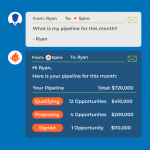Why media buying and advertising is ripe for artificial intelligence
Columnist Carl Erik Kjærsgaard explains how AI can play a role in marketers’ media-buying plans, freeing them to focus on strategy and creative.

There’s a reason transparency is such an important topic of discussion throughout the industry. In June, the Association of National Advertisers (ANA) published a bombshell of a report revealing that executives were aware of — and sometimes mandated — extensive use of nontransparent practices like rebates and kickbacks.
As a direct response to the report, JPMorgan Chase sent shockwaves throughout the industry when it became the first big brand to hire a team of auditors to examine its media agency. Ultimately, Chase wanted to ensure “that they are getting what they paid for when it comes to their advertising spend and that the agency has been compliant with the contract.”
It seems that as the industry has grown, the power has migrated to the media agencies, rather than the marketers. With so many new platforms available and decisions needed in today’s media-buying process, neither the advertiser nor the media agency knows where money is being spent. The need for more transparent and open practices has never been more apparent.
Emerging technologies, like artificial intelligence (AI), present opportunities to have our greatest minds come together and impart knowledge to the machines, freeing human minds to give the clients what they truly value: strategy and creativity. In order to bounce back from the scathing report and win back trust, media agencies will need to adopt new technologies like AI and old methods like transparency.
While that may seem simple, it takes a lot of change. Read on to understand how AI can play a role in your media-buying strategies.
Transparency through artificial intelligence
Though years away from complete maturity, artificial intelligence has already infiltrated our lives. It’s in our smartphones, cars and airplanes. With large sets of data and algorithms to support its growth, AI is at a point where it can solve real problems better than humans can; media buying doesn’t have to be an exception to this.
The process of creating media plans hasn’t changed for decades, but the decisions that need to be made have seen astronomical growth. There are thousands of decisions and outcomes that a media agency needs to take into account when buying media. How can a human brain possibly operate adequately in the decision-making process at this rate?
Yes, there a number of different tools for each channel that optimize media metrics — e.g., GRP, affinity or impression numbers — but it doesn’t solve transparency, since you don’t know how your business outcome will be affected.
Artificial intelligence would remove the human bias from the media-buying process. All it knows is the algorithms and equations that are entered from the massive amounts of data it takes it. By incorporating AI into the media planning stages, everything can be reported by the computer, keeping the process transparent and open. Advertisers will know exactly how their money is being spent. They could even change the algorithms and reallocate budget and ad spend if needed.
How it can work
AI learns differently from the way humans do — if you apply it to the media buying process, it will learn from your past what media combinations will affect you and by how much. It has the potential to use algorithms to distribute money toward the most effective combination of media buys. And through machine learning, the data could learn from past campaigns what combinations worked best.
Setting course for a new path
To prevent further damage, the industry needs to collectively hold itself to higher standards. It claims to be at the leading edge of technology and creativity, and yet it seems that agencies have been sleepwalking for the last decade.
AI and machine learning force human assumptions to be completely transparent in the mathematics, reducing the potential for unintentional human bias that still occurs in scientific research today. Incorporating these new technologies presents the opportunity to change decision-making and business outcomes for the better.
Advertisers want the truth, and something has to give. It’s abundantly clear that the time is now for markers to reclaim the power and embrace the technology that they need. AI can create a new future for how media agencies buy media for their clients — but it only happens if marketers can wake up.
Some opinions expressed in this article may be those of a guest author and not necessarily Marketing Land. Staff authors are listed here.
Marketing Land – Internet Marketing News, Strategies & Tips
(71)














